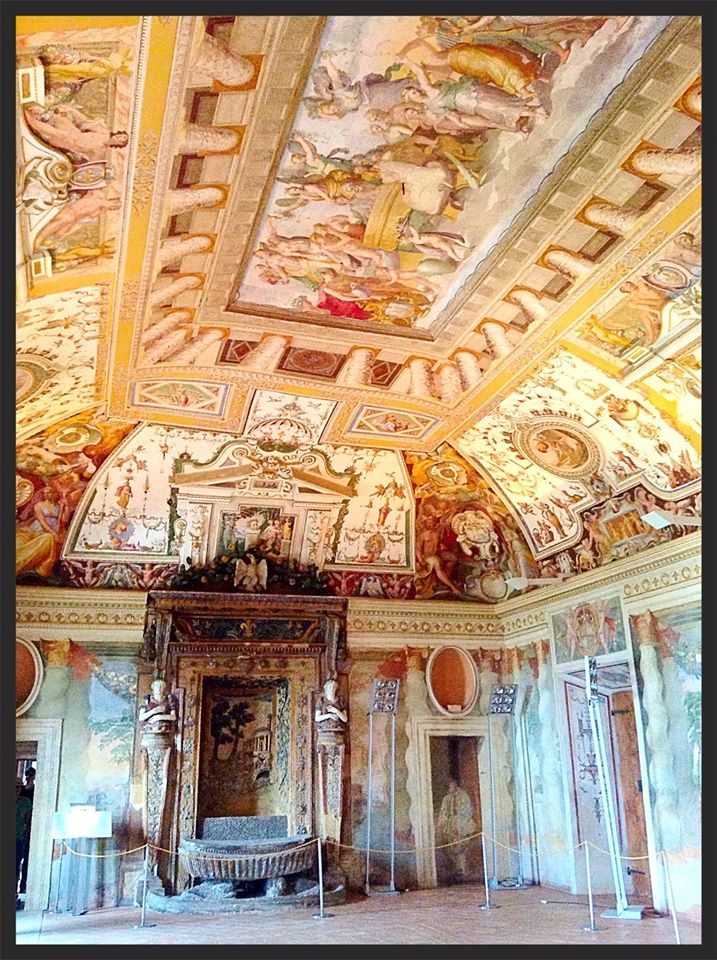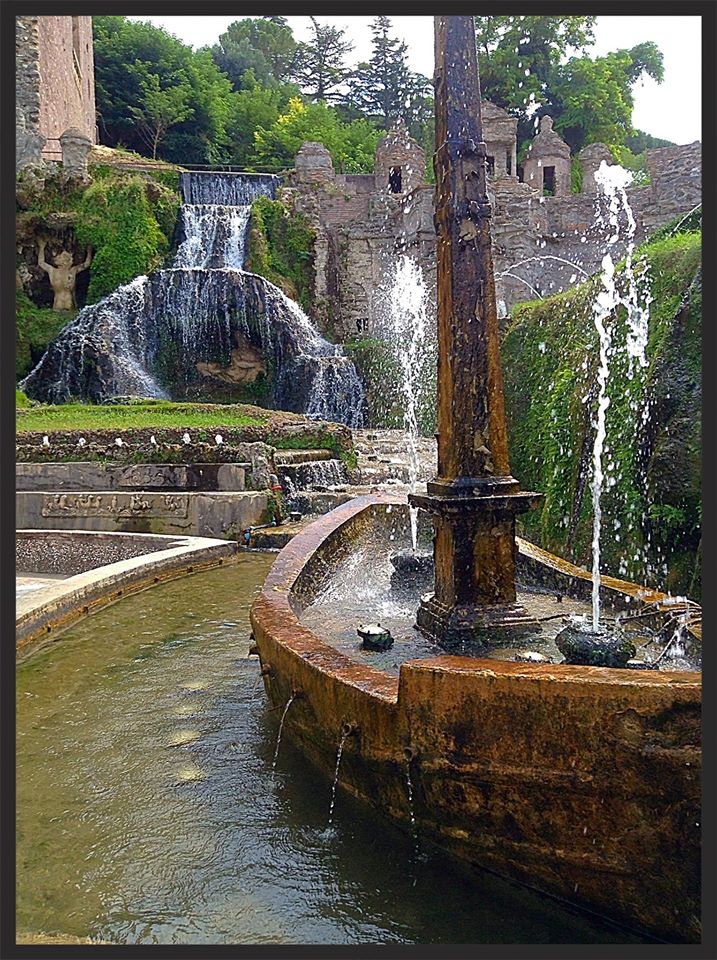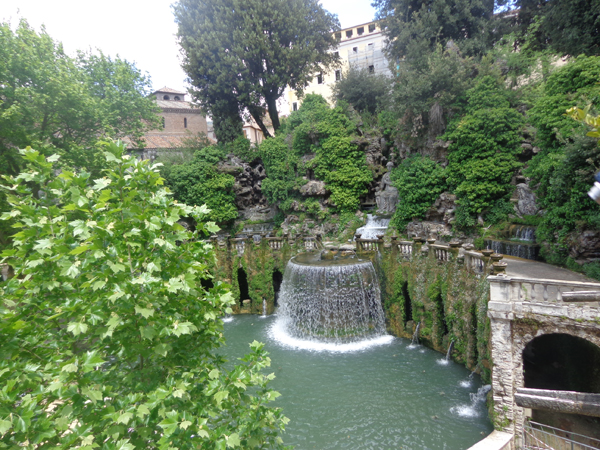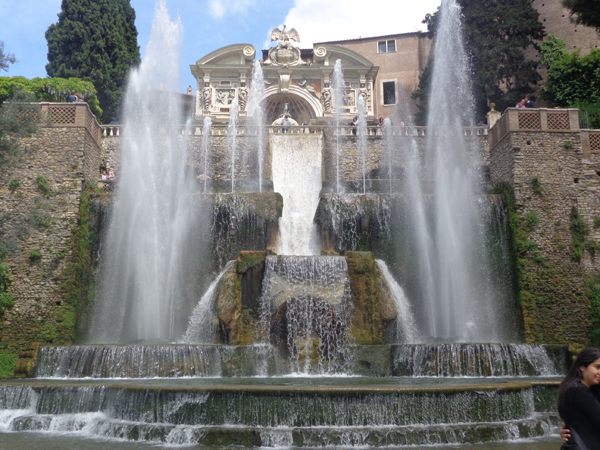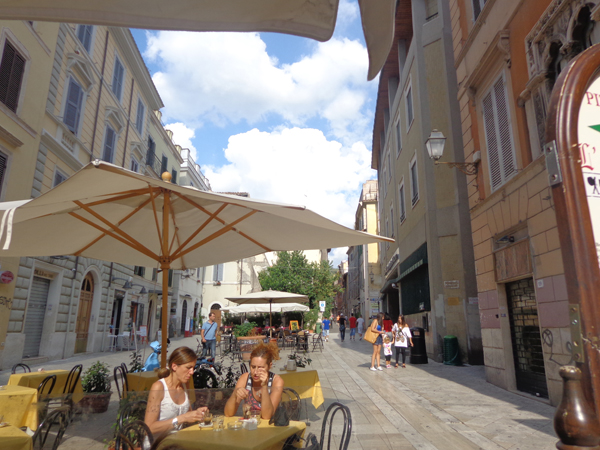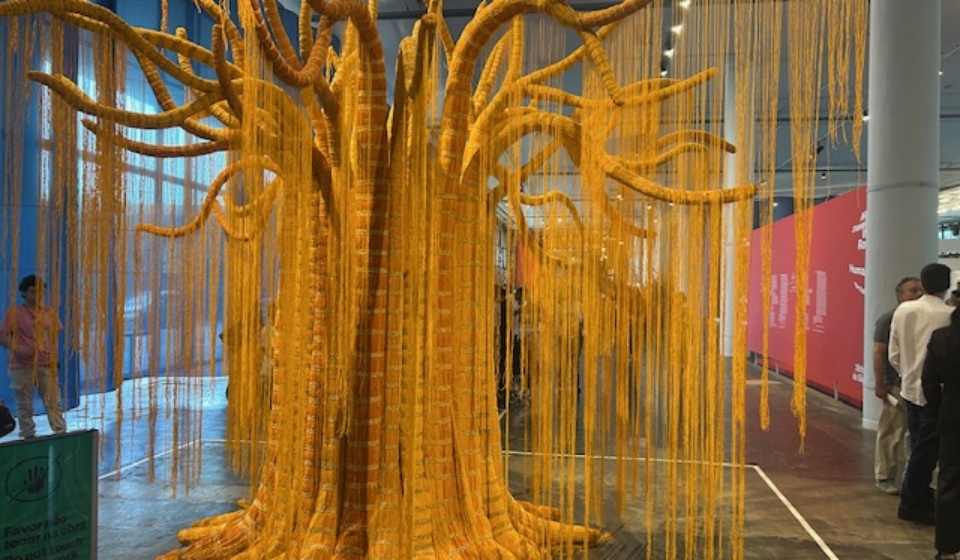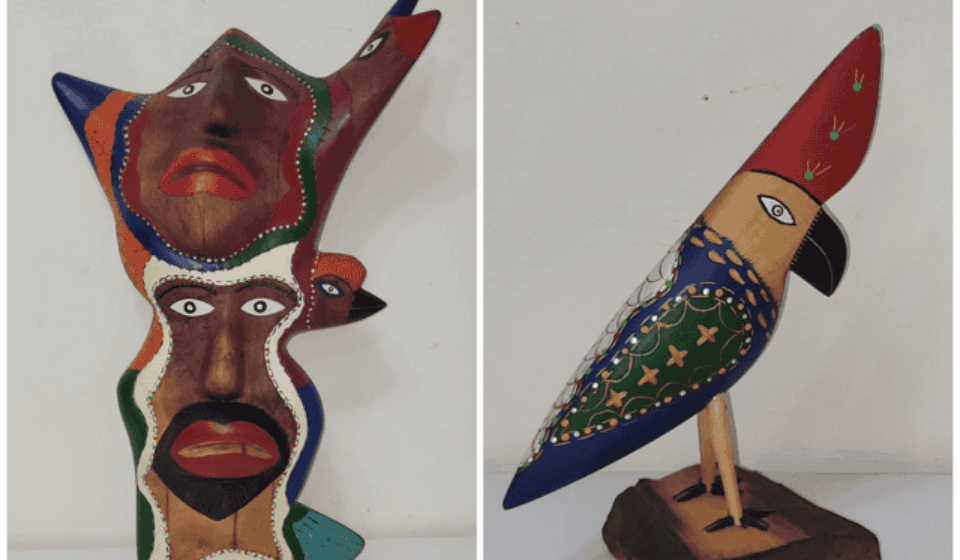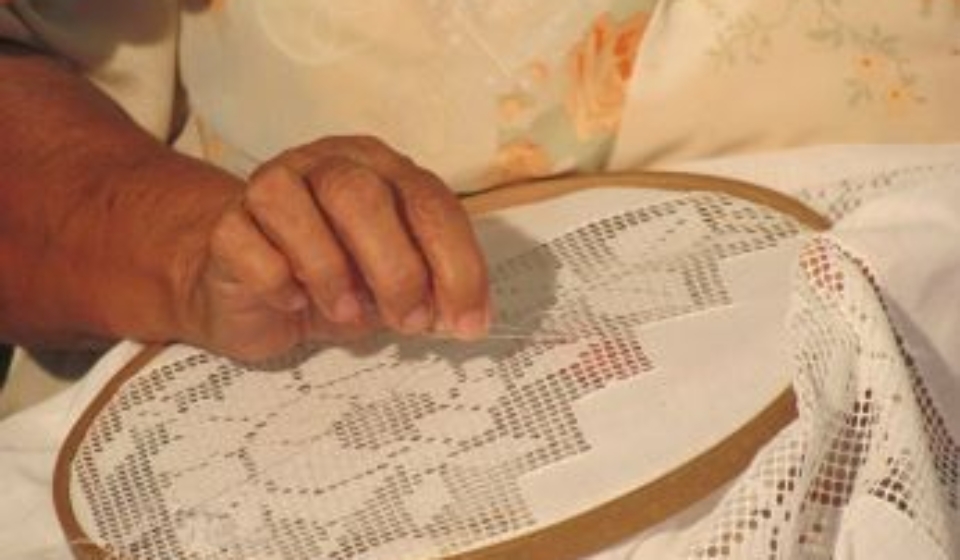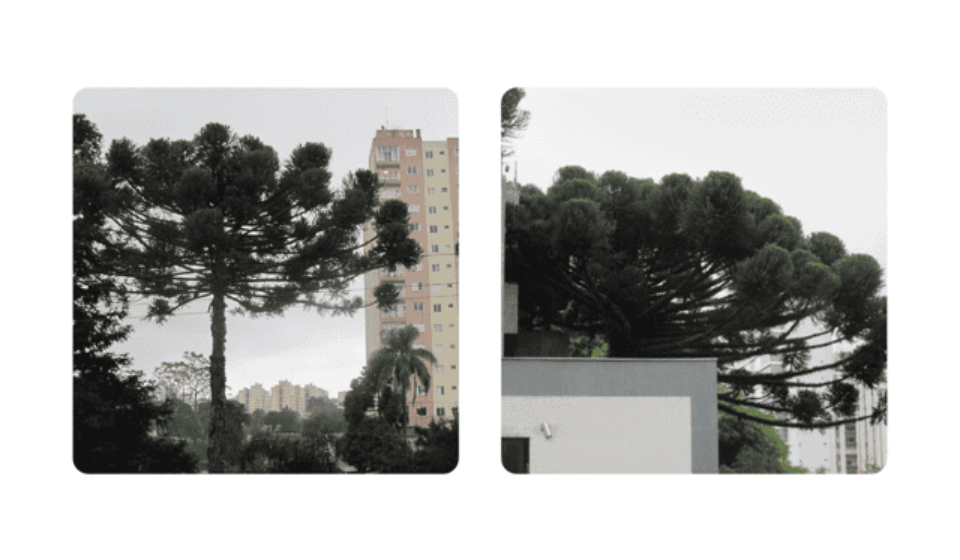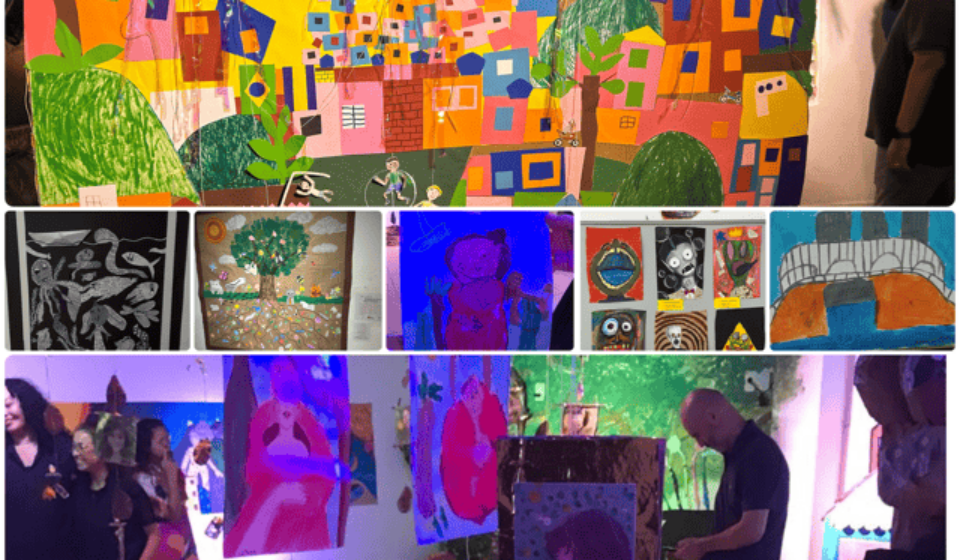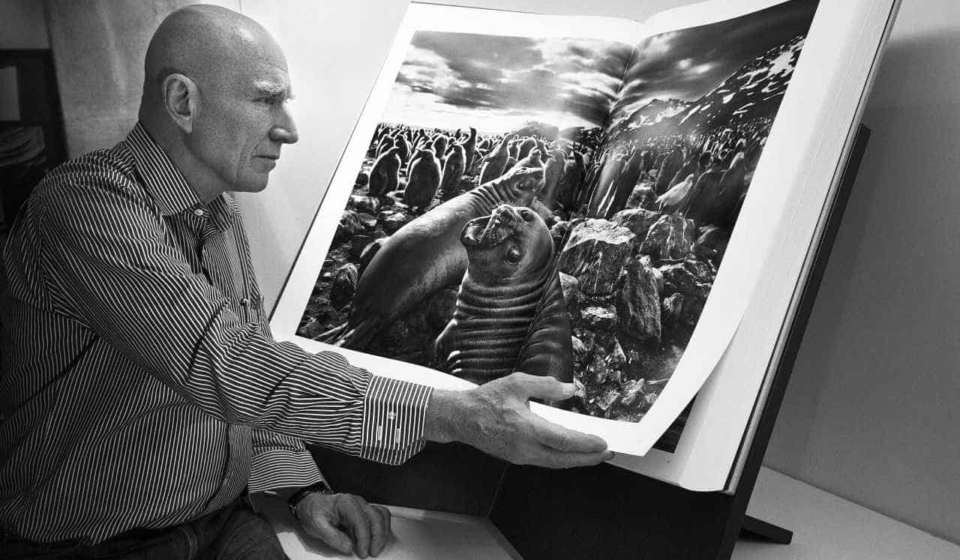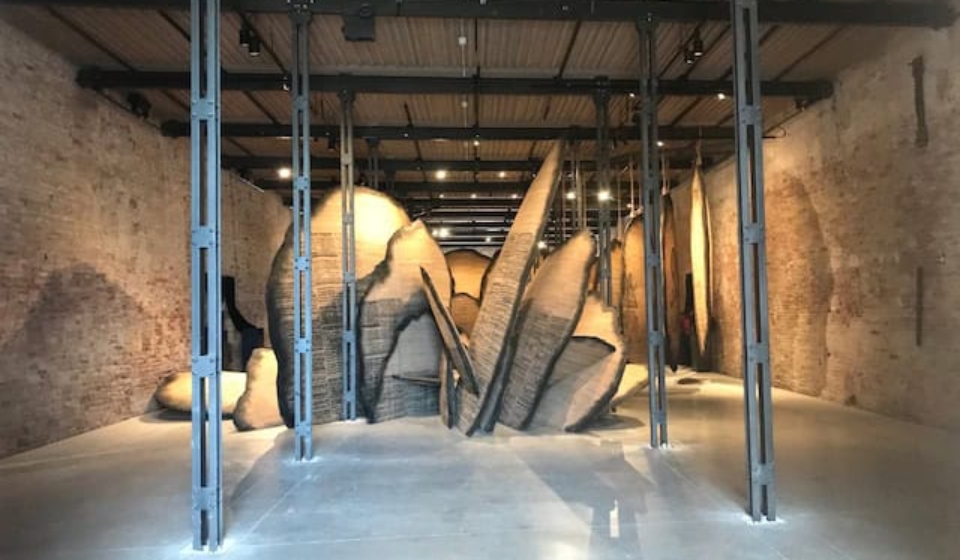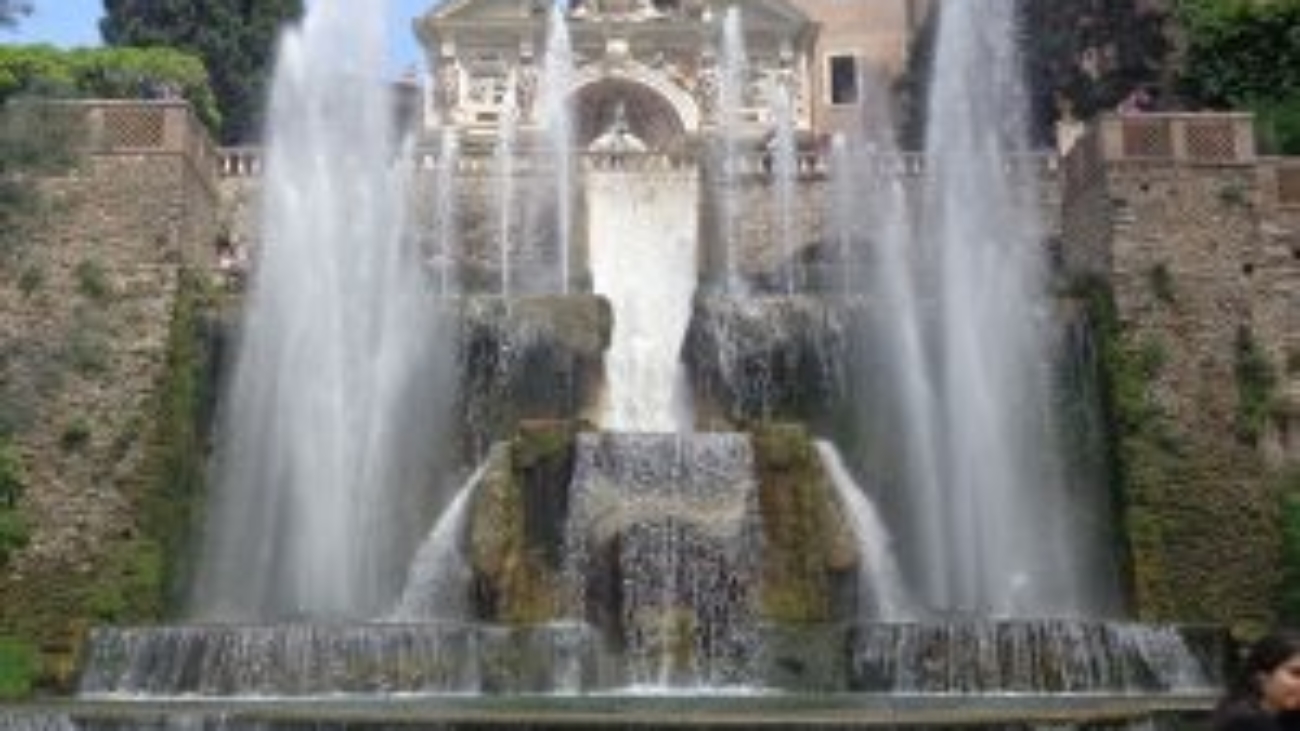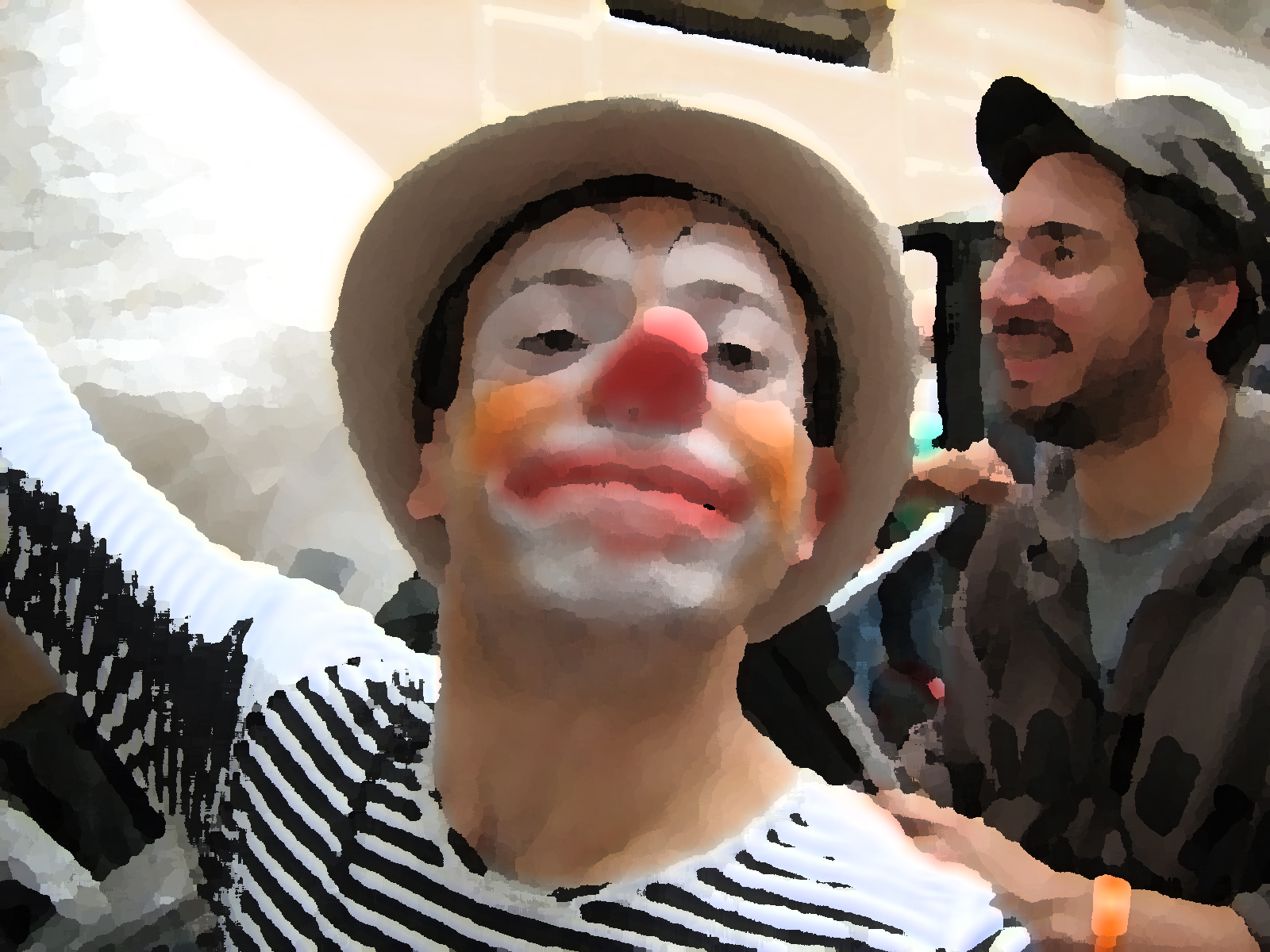O dia tinha começado para Mari como um daqueles em que as tarefas ultrapassam o limite diário de horas produtivas e tornam o cotidiano de uma mulher moderna num corre-corre sem fim. Mãe de três filhas e sozinha para educá-las, desempenhando a profissão de jornalista, numa assessoria de um órgão estatal, a inquieta mulher cumpria a jornada diária de acordo com as etapas estabelecidas na sua agenda-guia, que meticulosamente atualizava todas as noites e a carregava consigo durante o dia, para se prevenir de algum esquecimento.
No trabalho, entre um telefonema e outro fazia matéria, marcava entrevistas, lia as principais notícias do dia, organizava eventos e “zás-traz”, a manhã passava e a hora de buscar a filharada a despertava daquele redemoinho de ações. A ordem era almoçar com as filhas e passar no banco antes de voltar ao trabalho.
Um corre-corre
Depois do almoço lá foi ela, na certeza que a única opção de sua vida era andar rápido e realizar o maior número de tarefas no menor espaço de tempo. Estacionou o carro dentro da área reservada para os clientes da agência e foi falar com o gerente. O papo foi produtivo, pelo menos ela achou e saiu satisfeita depois que conseguiu uma aplicação melhor e se convenceu que poderia levar vantagem nesta forma de aplicar um dinheiro que tinha recebido, que não fosse a tradicional poupança.
Resolveu, antes de ir embora, passar na Caixa Econômica e resgatar as jóias que tinha penhorado. Afinal era de lascar ficar sem dinheiro. Tinha que usar toda a sua criatividade na busca pelo “vil metal”.
Muito embora estivesse apressada e com a agenda de tarefas na cabeça, Mari era solícita e sempre dava informações com delicadeza, caso alguém a abordasse na rua.
E foi o que aconteceu na seqüência. Logo que estava terminando de atravessar a rua, colocando seu pé na calçada, equilibrando-se no seu mimoso tamanquinho azul, de salto de madeira, com ares de “senhora rica”, mulher refinada, saia estampada azul em tons escuros e blusa de malha azul claro, bebê, óculos escuros – cá pra nós, comprado em “camelô” por uns R$ 20,00 – que para um tipo como ela, alta, bem formada de corpo, parecia um verdadeiro modelo “Dior” de mais de R$ 1 mil, foi abordada por um homem muito simples, aparentando mais de 40 anos, do meio rural, de chinelo de dedo, o conhecido caipira.
– Oi moça! Pode me dar uma informação? Chamou-a.
– Onde fica esta rua? – Apontou com o dedo ao que estava escrito no papelzinho meio amassado que tirou do bolso.
Papel amassado
Ela olhou o endereço. Pensou, pensou e disse que não conhecia aquela rua mesmo conhecendo bem aquele bairro. Meio apressada chamou o primeiro homem que passou ao lado dela para ajudar. Um sujeito vestido com um terno marrom, bem afeiçoado, moreno, um cara de boa aparência.
– Por favor, ajude este senhor – chamou.
Conhece esta rua aqui? Perguntou ao transeunte e aproveitou para sair dizendo: já estou meio atrasada para o trabalho e preciso ir andando, até logo, estou indo…
– Não, não, calma aí, espera um pouco que eu não conheço também a rua, e pelo jeito este senhor é da roça e está perdido aqui na cidade – disse o sujeito de terno tentando fazer com que ela não fosse embora.
Naquele rola-rola de querer ir e o outro segurar, não eu vou, não moça, fique aqui e ajude, o caipira, gordinho e baixinho, com o semblante de alguém que está perdido no mundo, tipo aquele cachorro que “caiu do caminhão de mudança”, logo interpelou os dois, em especial a mulher que tentava sair de fininho.
– Por favor, me ajudem – implorou. Não conheço nada de Curitiba. Vivo em Pinhais e estou aqui para procurar um cara que me comprou parte da terrinha que eu tinha lá e não me pagou ainda nenhum tostão! Só me deixou este endereço e este bilhete (um bilhete de loteria) e eu quero devolver a ele e receber o dinheiro – disse humildemente o caipira.
É claro que era tudo encenação. E foi aí que a “porca começou a torcer o rabo”, como dizem os contadores de prosa numa roda de chimarrão. O tal sujeito de terno, muito metido a mediador disse para Mari:
Bilhete de Loteria
– Olha só! Um bilhete de loteria! Que tal ir até aquela casa lotérica ali- apontou ele (a lotérica era perto de onde estavam, vejam só). Vamos ver se este número não é premiado!
Evidentemente que Mari começou a ficar curiosa. Esta terrível curiosidade que mata a gente. Especialmente para ela, a curiosidade era um vírus que não a deixava em paz, mas que a ajudava muito quando exercia o papel de repórter nas suas entrevistas e escritos. Lá foi ela, junto com o sujeito de terno e o caipira na casa lotérica. Interessante que o fulano bem arrumado nem se dirigiu ao caixa e, sim, foi direto ao painel, no qual estavam o resultados dos bilhetes premiados.
– Pelos Deuses do Olimpo! Exclamou. Este homem é um sortudo! O bilhete dele é o primeiro prêmio. Ganhou R$ 1 milhão – disse o sujeito de terno.
Imediatamente, Mari pegou o bilhete da mão do sujeito e foi conferir também o resultado. Pelo Bilhete identificou o número, que era o mesmo do que continha naquela extração que estava em suas mãos e, não teve dúvidas, o cara realmente estava com um bilhete premiado. Pensou logo numa boa matéria para vender como “free-lance”.
Afinal não é sempre que se encontra alguém tão “sortudo” e com uma história tão pitoresca.
Porém, sem que ela pudesse pensar e dizer alguma coisa, o “humilde”, isto é, entre aspas, porque depois ela descobriria que de humilde não tinha nada; o caipira, com a cara mais lavada do mundo, de pobre coitado e desamparado, disse aos dois, que ele daria uma boa quantia em dinheiro, se cada um dos dois o ajudasse a receber o prêmio sem problemas – tinha muito medo de cidade grande e de ser assaltado.
Falava isso com os olhos meio fechados, aqueles olhinhos de ave de rapina tentando dar a conotação de estarem impregnados de terror, mas que o deixavam com a fisionomia mais disforme do que nunca.
Conto do bilhete premiado
Santa ingenuidade da moderna e independente mulher, sem tempo para ler as páginas policiais – que, aliás, não era o seu forte, pois preferia o lado lúdico da vida – e logo se ofereceu para dar carona aos dois, tanto para o sujeito de terno, como para o homem da roça, para levá-los ao banco. E que ele, o caipira, não se preocupasse em relação à recompensa em dinheiro porque não queria nenhuma parte do prêmio, mas, sim, ver se realmente ele ganhou na loteria e que tivesse proteção e a orientação devida para administrar a quantia.
É possível alguém em pleno século 20 – a história é vivida no fim da década de 90 – pensar desta forma, jornalista, esclarecida, conhecendo os perigos do mundo moderno.
Evidentemente que pode ser assim. Mari é desligada. Totalmente sem noção naquele exato momento da proposta que o homem estava lhe fazendo e ela insistindo no convite de levá-los até a Caixa Econômica, centro da cidade, onde conhecia a gerente, que poderia orientar da melhor forma o homem da roça.
– Não, não – respondeu o caipira. Não vou de carona, enquanto não tiver certeza que posso confiar em vocês – completou.
– Que raios de teimosia tem este homem – pensou ela.
Proposta indecorosa
Naquele papo em que os três, todos tentando convencer um ao outro do que era mais interessante para cada um, Mari, provavelmente, não entendeu bem o que o caipira quis dizer e levou um tempo para deixar cair a ficha na sua cabeça tresloucada e reagir perante a proposta indecorosa.
Assim, o colóquio sem nexo, de só vou se me provar que posso confiar, etecetera e tal, durou quase meia hora e a mulher, de tão envolvida naquela trama absurda, tinha esquecido dos compromissos e do trabalho e num dado momento, até que o sujeito de terno, já aliado ao caipira, e se fazendo de louco por dinheiro, disse que concordava, sim, de ir até o banco dar todo o dinheiro que tinha para o caipira e provar a sua idoneidade, Mari paralisou e ainda foi obrigada a escutar a voz impaciente do caipira.
– Então, moça – disse, agora ansioso e impaciente por uma posição urgente de Mari – não posso aceitar a carona e buscar meu prêmio porque para isso precisa me dar o seu dinheiro e me dar provas que é confiável.
Esta frase foi como um soco na boca do estômago da mulher que quase caiu de cima de seus tamancos azuis.
Vejam só a que ponto chegou a petulância do cidadão. De coitadinho e caipira não tinha nada. Tinha, sim, um faro incrível, ou uma boa equipe de farejadores para abordar alguém com dinheiro em conta. Mari estava com a grana da venda da casa da praia – a tranqüilidade de sua vida nos próximos anos.
Os dois provavelmente sabiam ou tinham uma intuição muito forte, para chegar nela com tanta segurança, na cara dura, com aqueles olhinhos de ave de rapina, nariz enorme, corpo desajeitado, baixo de estatura, gordo e com roupa meio encardida, e fazer uma proposta tão indecorosa para uma mulher moderna, independente, esclarecida e terrivelmente altruísta.
Tão altruísta que até já era um defeito e não qualidade.
O pior era apreciar o outro sujeito se fingindo de morto, palerma, empertigado do lado dele, concordando com tudo e que também na expectativa, aguardava ansiosamente a resposta de Mari, que parecia estar acordando do seu torpor habitual e retornando à terra, ao mundo cruel e real.
– Senhor, disse, olhando bem firme nos olhos minúsculos, daquela ave de rapina, com o dedo em riste, posição de defesa naqueles saltos altos de mulher vaidosa, que a deixavam o dobro do tamanho do caipira, apontou ao seu nariz e disse forte: para confiar nas pessoas basta olhar bem nos olhos, penetrar na sua alma e enxergar se é limpa ou não!
Na verdade, aquela inspiração momentânea não veio à toa, na sua cabeça. Lembrou de um amigo jornalista, que naquele dia mesmo, tinha falado sobre a importância de pessoas que encaram sem medo. Na opinião dele, essas pessoas, que olham nos olhos, são confiáveis.
-E depois, tenha dó, estou na frente de dois marmanjos. Os tipos chamados machos, ao que parece! Que pouca vergonha! – fez uma careta de pouco caso e olhou de cima abaixo aos dois homens.
– Impossível conceber que duas figuras como vocês têm a ousadia de dizer que não confiam em uma mulher! E logo eu, trabalhadora e honesta! Euuuu – frisou em tom de reprovação. Eu, repetiu, sustento quatro filhas sem pedir ajuda a ninguém tenho que provar que sou confiável! Tenha santa paciência, vamos, vamos, me mostrem a carteira de identidade! Já!!!!
Sumiram num passe mágica
Para surpresa dela, os dois escafederam-se num passe de mágica e a deixaram sozinha, plantada no meio da calçada, meio zonza, não acreditando naquele colóquio absurdo e que ainda depois, rumo ao trabalho, ficou pensando se era real ou não aquele conto maluco. Chegou na sala em que trabalhava, onde também trabalhavam mais quatro funcionárias públicas, contando a proeza e dizendo que talvez um caipira tenha ganhado na loteria. É evidente que Sonia caiu na gargalhada, uma das companheiras de sala.
– Mas, não é possível que você não conhece o “conto do bilhete premiado”, muito antigo? Olha que você teve sorte porque o povo entrega tudo, tal é a habilidade que eles têm de interpretar a situação. Diz que é fantástico como agem na representação da história. Ainda conseguem copiar exatamente o bilhete premiado do dia sem nenhum defeito. São mentes brilhantes neste espetáculo de rua, falou na gozação, a amiga.
– Jure, não sabia disso. Gente, murmurou, meio divagando. Então está explicado porque os dois estavam tão empenhados em me convencer a dar a grana que tenho no banco e provar que eu era confiável. Esses safados merecem “cana”.
Sem rodeios ligou para Lúcia, sua amiga e advogada, e pediu orientações para o caso. Explicou que não teve danos financeiros, apenas perdeu tempo e estava corroída de ódio por si mesma, por ter sido tão tonta em escutar aquele monte de lorota. Lucia disse que o melhor a fazer era dar queixa e evitar a sem-vergonhice das matérias mentirosas do governo dizendo que a cidade não tinha problemas de segurança e que tinha baixado o índice da criminalidade.
– É porque ninguém dá queixa. Sabe que a polícia não faz nada, e aí as coisas acontecem e não existe registro e boletim de ocorrência e os políticos se aproveitam desses dados mentirosos, justificou Lucia.
O argumento da advogada sobre as não queixas deixou-a indignada e fez brotar o seu espírito idealista. Incorporou a justiceira, e mais do que rápido ligou para o distrito policial próximo do bairro em que aconteceu o episódio e solicitou que policiais vistoriassem o local e tentassem pegar os estelionatários em flagrante.
O que, sem dúvida, não aconteceu porque os representantes da lei estavam sem viatura e não podiam sair do distrito. Parece engraçado, mas é pura verdade. Exatamente, neste momento, é que começa o outro lado da história. Aí que se torna hilária para alguns e trágica para outros.
De fato, o policial não pode ajudar, embora tenha sugerido lavrar o ocorrido na Delegacia do Estelionato, o que ela fez e onde deixou algumas horas de impaciência e nervosismo quando o escrivão, mais com cara de bandido, do que policial na concepção da jovem senhora, que nunca tinha entrado num ambiente tão hostil como o de uma delegacia e enfrentado os famosos “tiras” com “cara de mau” e, ainda, vestidos à paisana, sem aquele uniforme militar que dá respeito e não assusta frágeis mulheres.
Lá, ela reconheceu o retrato do caipira na lista dos foragidos. Assim de cara. Acho que foi porque olhou tanto para olhos daquela ave de rapina, sem-vergonha, e registrou seu retrato na mente com a maior facilidade. Mas o sujeito de terno não estava na lista.
– Este é o fulano de tal, disse o policial tranquilamente. Como não conseguimos uma queixa direta para abrir um processo, acusando-o de suas barbaridades, ele vive livre e feliz. Encontro-o sempre na feira acompanhando a mulher e desfilando num tremendo “Vectra” prateado.
A pobre, a esta altura, quase morreu de susto, esbugalhou os olhos e ficou pasma de imaginar a cena: o safado fazendo compras com a mulher na feira e o policial cumprimentando a figura, na mais perfeita harmonia.
Paisagem bucólica.
Feira, carrinho de compras, carrão para levar as compras, polícia fazendo ronda, enfim, sem comentários. Somente no Brasil uma cena tão prosaica é capaz de ocorrer sem danos para bandido. E para piorar a situação depois do relato, o policial volta à ficha de denúncia e pede o endereço residencial dela. Que ousadia! Mari empertigou-se inteira e disse que não ia dar.
– Só vou dar o endereço do meu trabalho. O da minha casa, nem morta! Que petulância. Você me garante segurança e proteção?
– Mas é lei dona. Preciso do seu endereço. O juiz determina que deve ser assim, insistiu o policial.
– Não, não e não…me deixa em paz, que só quis ajudar a melhorar a segurança de minha cidade fazendo a denúncia. Não quero mais incômodo e falar sobre este assunto e saiu sem dar tempo ao policial de falar mais alguma coisa.
Entrevista
Mas deu azar, a paz em relação ao assunto não veio tão cedo. Certo dia, ao chegar no trabalho o telefone tocou e era o delegado do Estelionato pedindo se ela podia dar uma entrevista sobre o golpe, à TV Educativa, pois ia ajudar muito a evitar que as pessoas caíssem no conto e até prender os marginais.
Mari se prontificou a dar a entrevista e lá foi atender o pedido do delegado, mais acessível, diferente do outro homem da lei de cara de mau. O “chefe da delegacia” explicou que este golpe, assim como o do pato, do anel e de muitos outros que ocorrem, ainda são difíceis de resolver porque, muitas vezes, as pessoas que caíram não dão queixa, por terem vergonha de si mesma. Contou que a irmã de um juiz tinha dado todos os dólares que tinha guardado em casa e ainda convidou os safados para tomar café com ela, na sua casa.
O delegado disse ainda que, o que ela estava fazendo era mais do que um serviço à comunidade, era uma boa ação no sentido de alertar sobre a questão. A situação é dúbia num processo judicial sobre vários aspectos, pois ainda se questiona quem é o vilão da história no processo. Quem deseja enganar quem. Na verdade os dois. Tanto a vítima como o marginal de fato, pela simples razão que um deseja o dinheiro do outro.
Mari fez tudo direitinho falou de costas para a câmera preservando, dessa forma, a identidade. Delegado falou sobre o golpe e fez alerta para que as pessoas tivessem cuidado, pois os marginais fazem um verdadeiro teatro, o teatro do absurdo, para envolver a vítima.
Assim, acabou a história….
Acabou? Por certo que não acabou. Mais ou menos três anos depois do acontecido, a campainha tocou na casa de Mari(Isso, sem contar os dias que passou com medo que o tal baixinho, com cara de ave rapina, aparecesse na porta de casa e a intimidasse por causa da denúncia). Era um oficial de justiça entregando uma intimação para testemunhar contra o fulano de tal que tinha tentado passar o “conto do bilhete premiado”.
Intimação! Ela se sentiu horrivelmente ao ler o papel, numa linguagem arcaica, aquela cheia de números, lei, que o judiciário usa para impressionar o povo.
A intimação era para comparecer tal dia, tal hora, na vara criminal ou coisa parecida, para reconhecer o acusado, e se não fosse seria enquadrada no artigo tal e poderia sofrer sanções previstas em lei. Era só que faltava, essa! Os indivíduos descobriram o endereço da mulher.
– Não vou, pensou… e ligou para o local dizendo que ia viajar.
– Se não comparecer estará sujeita a sanções, disse a pessoa do outro lado tratando-a como se já estivesse cometendo uma falta e despejando no seu ouvido uma série de ameaças baseadas em lei, artigos, códigos, números e toda a parafernália jurídica, no caso do não comparecimento a uma intimação. – Porra, agora virei vilã dessa história, o que é pior, tenho que olhar de novo para aquela criatura horrorosa.
Altiva, ela foi cumprir com o seu dever de cidadã e testemunhar contra o marginal. Testemunhou?
Que nada! Esperou, esperou e de repente avisaram que ele, o bandido, não tinha aparecido e que a audiência seria transferida para o dia tal, do próximo ano. Engraçado, os oficiais de justiça foram tão tranquilos quando disseram que o bandido não tinha comparecido. Parecia tão normal e ela era obrigada – pensou, rindo para sim mesma.
Não apareciam ao julgamento
E assim foi. No dia tal, do próximo ano, lá estava Mari na Vara Criminal para depor contra a idoneidade de um artista de rua, que só cometeu com ela o pecado de encher o saco de tanto mentir e tentar arrancar todo o seu dinheiro. Mas, no bom sentido, sem agredir, só com encenação e mentirinha. Aí espera, espera e nada.
Desta vez, era o bandido e o juiz que não tinham aparecido, e o “maledetto” encontro foi transferido para o final do próximo ano (Isso, sem contar, que já estava no terceiro ano de tentativa e para sorte de Mari o encontro para reconhecimento não se efetivava). A intimação aparecia. Mari ia depor e nada.
Quando não era o bandido, era o juiz que não aparecia e, assim, o processo se arrastava numa letargia sem precedentes, aliás, numa demora tão comum na vida judiciária brasileira. Já estava odiando todos os juízes, advogados e promotores e até achando um tremendo gozador, o tal caipira que queria lhe passar a perna.
Virou vilã
Neste meio tempo, muitas águas rolaram na vida de Mari, que até de uma forte depressão foi vítima por uns tempos. Lá pelas tantas, foi intimada de novo para depor contra o caipira. É chamada em uma sala, onde a juíza, algo monumental de tamanho, ombros largos, mãos grandes, cheias de anéis gigantes, horrível e grosseira, mandou-a “calar a boca” porque não era hora de falar e só deveria falar quando mandasse.
Era assim que a fera se manifestava com os seus colaboradores, em especial Mari que mais parecia um verme desaparecendo por baixo da mesa que separava a grande dama da pobre mulher, sem dúvida, agora quem mais parecia a vilã da história era ela, a mulher moderna e idealista. Se abrisse a boca de novo para tentar explicar que não queria mais depor, pois não tinha sido roubada, só estava ajudando e que o ambiente estava lhe prejudicando, poderia ser até presa por desacato à autoridade.
Loucura! Mais do que rápido calou a boca.
E pela última vez, diga-se de passagem, última vez que Mari compareceu ao local para testemunhar, depois de quatro ou cinco anos de tentativa para prender o grande vilão do conto do bilhete premiado de Curitiba, encontrou apenas uma mulher, descendente de japoneses, comerciante, que estava lá também para depor porque ela, sim, caiu no conto e entregou R$ 5 mil para os marginais. Novamente, a audiência não aconteceu e aí, entregou um atestado médico e da psicóloga para não mais participar do processo, pois estava lhe fazendo mal.
– Como!!!!, enfatizou o promotor, elegantemente trajado, voz poderosa, o tipo estilo “eu sou o bom, eu sou o bom”, protegido por uma mesa que os separava. Comoooo!!! Falou alto e alargou as narinas, deixando os pelos à mostra naqueles enormes buracos nasais sentenciadores. A senhora não quer colaborar com a segurança da vida das pessoas. Uma situação que pode acontecer com todo mundo e a senhora está deixando bandidos na impunidade sem nos ajudar, disse o promotor em tom ameaçador.
Bandido está solto
Mari não se deu por vencida e insistiu no fato de não ser mais testemunha no caso. Depois de um palavrório cansativo, do promotor argumentando de um lado e a mulher implorando do outro, finalmente, o homem da justiça concordou em aceitar um laudo da psicóloga e do médico atestando sobre as condições de saúde da testemunha. Para encurtar a história, até hoje não é possível saber se os marginais foram presos.
Uma história tão esdrúxula, com incríveis personagens caricaturais para histórias em quadrinhos, focadas em pegadinhas, que lembram os famosos causos de Pedro Malazarte (ópera cômica brasileira, de Camargo Guarnieri, com libreto de Mário de Andrade, que estreou em 1952, no Rio de Janeiro). Este, sim, era engraçado. Lembro de meu pai, que colocava os filhos em roda e divertia a todos contando as aventuras do caipira que adorava pregar peças nas pessoas.
De fato, o “conto do bilhete premiado” é um espetáculo à parte, principalmente, com essa abordagem, em que Mari faz a heroína, cuja benevolência se torna piegas de tanto escutar lorota.
Comprovadamente os marginais são fantásticos na atuação. Dá para imaginar o quanto estes caras ensaiam para atuar diante da vítima e são sincronizados com a equipe, considerando que nunca estão sozinhos numa ação. Sempre precisam de mais gente atuando na retaguarda.
Tanto empenho para viver na marginalidade, quer dizer, tanto talento para viver na marginalidade, é desperdício! Provavelmente atrairiam muito público em verdadeiros espaços culturais sem correr o risco de ver o sol nascer quadrado.
Talvez, neste espetáculo, o mais coerente foi realmente o delegado que, pela experiência, sabia que os safados tiravam as suas horas de sono com as “pegadinhas” para enganar outro “ganancioso” que também estava querendo ganhar uma grana sem muito esforço. Por sentir-se impotente na sua missão de homem da lei, acreditava que divulgando, pelo menos, alertaria que o conto era apenas uma invenção de talentosos atores, com mentes brilhantes, porém marginais, que de ensaio em ensaio, de rua em rua, passavam o chapéu, ops, não… não é verdade. Roubavam a cena, também, não.
Espetáculo maluco
Na verdade, ninguém roubava a cena deste espetáculo maluco, que para fazer sucesso exigiria a presença de todos no palco da vida, assim, dessa forma, seria muito hilário: o caipira, o sujeito de terno marrom, os policiais sossegados, o delegado (fácil alertar e dizer que não pode fazer nada), o judiciário arrastando todos os processos com a barriga, pessoas ambiciosas e também crédulas, para estar completo o time e orquestrar esta horrível ópera – que não é igual a pura e engraçada ópera cômica do Pedro Malazarte. É hilária, sim, com aquele humor ácido da triste realidade brasileira, que faz com que a boa-fé, seja sinônimo de estupidez e alimenta a malandragem, amparada num sistema jurídico inconsistente, lento e prepotente.
Bravo! Bravo!
*História verídica vivenciada pela editora do site, Mari Weigert, nos anos 90.
